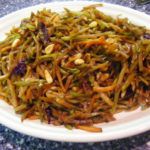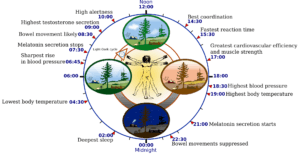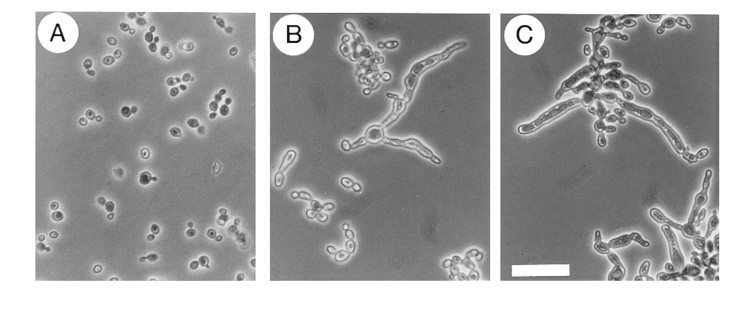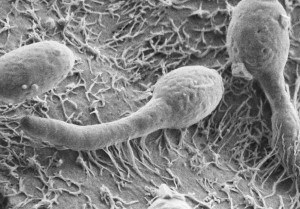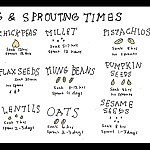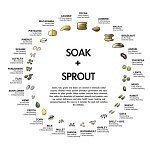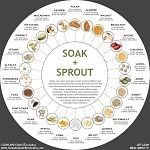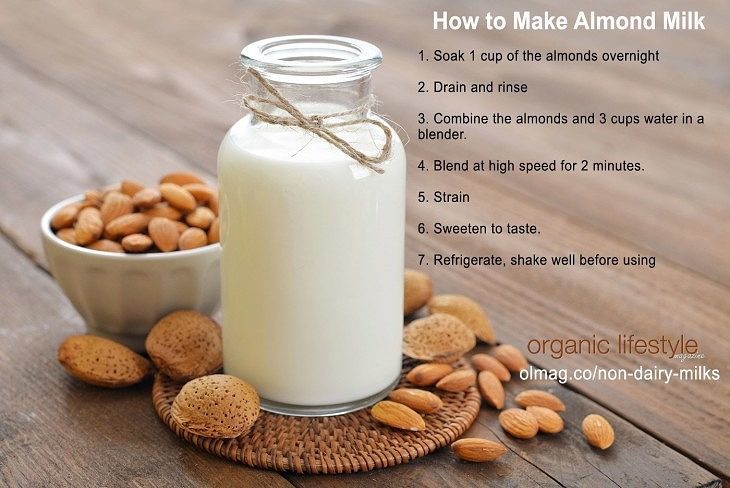Is your endocrine system healthy? If you suffer from regular insomnia and other sleep issues, dull skin, depression, low energy, alopecia, a low sex drive, weight gain, puffy skin, excessive fear, anger, or ADHD, the answer is no. These are just some of the many symptoms that pretty much guarantee a sluggish endocrine system. Basically, if you’re not healthy, your endocrine system is not healthy. An unhealthy endocrine system means congested and otherwise degenerated glands are causing imbalanced hormone levels.
Contents

The holistic approach to ridding the body of disease is all about achieving homeostasis of the body through proper diet, elimination of toxins, and targeting specific,underlying issues through supplementation to reduce the most prevalent symptoms and aid healing. In other words, the goal is to rebuild the body’s cells. This is always the goal with achieving or retaining good health. As Raymond Francis taught us, there is only one disease, and that’s cell malfunction, which has two causes: nutrient deficiencies and toxicity. How sickness manifests itself depends on which cells are failing. If you rebuild the cells, the body works properly. For most people this can be done with diet alone.
On the other hand, sometimes a specific gland, organ, or an entire system (and it’s often a combination) within the body becomes so depleted, infected, and toxic, the body needs targeted assistance.
When the body is overwhelmed with toxins, parts of the body will become so dysfunctional that simply functioning produces more toxins than the body can properly evacuate. Picture a car engine with a blown head gasket (or the wrong gas, or whatever makes sense to you). For many people, their endocrine system, or one or more of the glands within, are so dysfunctional that autoimmune disease is just around the corner. The head gasket is about to blow.
How do you know if your endocrine system needs help? As mentioned earlier, if you’re not feeling well, your endocrine system is taxed. Even if the problem is originating within an organ or another part of the body, if you don’t feel well, your endocrine system doesn’t feel well. A look at the endocrine system will explain why.
Endocrine Anatomy 101
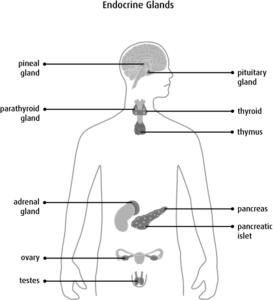
The endocrine system is the collection of glands and glandular organs that produce hormones to regulate metabolism, tissue function, growth and development (which includes repair), sexual function, reproduction, sleep, mood, the immune system, and more.
The glands of the endocrine secrete hormones directly into the spaces surrounding their cells where the bloodstream picks them up and circulates them throughout the body, ultimately reaching the organ or cells designed to respond to the particular hormone. Hormones, much like the nervous system, tell the body what to do, and when. The endocrine system does this through chemicals, while the nervous system does this through electrical nerve impulses.
Nerve impulses execute their effect immediately, but those effects are generally short-lived. The endocrine system takes longer. Hormones have to make their way from the gland that produces them into the bloodstream and eventually into the organ or cells where the hormones will take effect. A common way to look at the difference between the two is that the nervous system causes short-term responses, and the endocrine system is responsible for the body’s longer-term responses. The two systems are mutually interconnected.
Endocrine glands are glands of the endocrine system that secrete their hormones into the bloodstream. The major glands of the endocrine system include the pineal gland, pituitary gland, pancreas, ovaries, testes, thyroid, parathyroid, hypothalamus, and the adrenals. When most people consider detoxifying the endocrine system to balance their hormones, these are the body parts that come to mind.
The endocrine system includes a few organs that are not exclusively endocrine in function, meaning, they don’t just release hormones. The hypothalamus, ovaries, and testes are included in this list, but the liver, pancreas, stomach, small intestine, kidneys, and the placenta are all also part of the endocrine system.
- The hypothalamus, pituitary gland, and pineal gland are located in the brain.
- The thyroid gland is located in the anterior neck, spanning between the C5 and T1 vertebrae, with the four parathyroid glands situated behind it.
- The adrenal (AKA the suprarenal) glands lie on top of the kidneys.
- The pancreas, stomach, ovaries, and testes are located in and beneath the abdominal cavity.
- The thymus is a gland in the chest. It contains glandular tissue and produces several hormones. But the thymus is much more closely associated with the immune system than the endocrine system.
How Hormones Work
Hormones are chemical messengers created by the body to transfer information from one set of cells to another in order to regulate the functions of different parts of the body. This includes hormones that are created only for the purpose of telling another gland to produce another hormone. (In this case, this would be only to tell a glandular organ to produce a hormone.)
The endocrine system is regulated by feedback. Take the pituitary gland for instance. A signal is sent from the hypothalamus to the pituitary gland to secrete a hormone, which signals the target gland to secrete its hormone, which we will say is T4 in this case, a hormone produced by the thyroid.
When hormones enter the bloodstream they come in contact with many cells, but our hormones can affect only a few very specific cells called target cells. These target cells contain highly specific receptors, surface glycoproteins. The geometry of the glycoprotein molecules allows only for very specific hormones to attach to the receptor in the target cell surface.
Target cells have up to 100,000 receptors for any one specific hormone. If the desired hormone molecules are lacking, the receptor sites of the individual cells will multiply to raise the level of sensitivity. When there is an excess of a hormone, the receptors for that hormone decrease, reducing the target cell’s sensitivity. Back to our pituitary example, the levels of the T5 hormone should eventually rise in the bloodstream, and this tells the pituitary gland to reduce or stop producing the hormone responsible telling the thyroid to produce T4, and that’s a feedback loop.
Of course, this is a very simplistic explanation of only one of a few ways the body reduces hormonal response. There are many different kinds of hormones, and different hormones perform very different tasks. For a better understanding of these hormones, it’s on to the hormone creators.
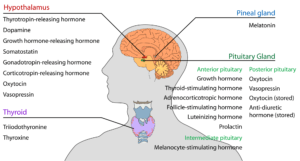
Hypothalamus
The hypothalamus is a part of the brain about the size of an almond, located below the thalamus, at the center for many critical bodily functions. The hypothalamus monitors the amount of salt and water in the body (by sensing the concentration of electrolytes in the blood), hormone concentrations in the blood, and the body’s temperature. It is associated with rage, aggression, hunger, and thirst. The hypothalamus creates “releasing hormones” that stimulate or inhibit the secretion of pituitary hormones. The pituitary gland used to be considered the master gland, but now we know that the pituitary is receiving its orders from the hypothalamus’s hormones.
The hypothalamus is an intermediary between the endocrine system, the nervous system, and the immune system. Its responsibility includes certain activities of the autonomic nervous system like growth, metabolism, childbirth, milk production, circadian cycles, and more. If you feel fatigued, sleepy, emotional, hungry, or thirsty, your hypothalamus is communicating with you.
Conventional doctors and holistic health practitioners agree that the hypothalamus functions pretty much problem free for most people, but, anorexia, bulimia, malnutrition, infections, inflammation, chronic insomnia, an excess of iron, excessive bleeding, head traumas, genetic disorders, tumors, radiation, and surgery can cause problems for the hypothalamus.
The hypothalamus and the pituitary gland are tightly integrated. Together they regulate all processes having to do with our primitive reactions like fight or flight, body temperature, thirst, hunger, sexual activity, and survival in general.
Hypothalamus Nutrition and Herbal Support
Healthy fats, B vitamins, vitamin E, and glandular support (desiccated animal glands) are typically used to support the hypothalamus, but eliminating inflammation is key. This gland usually responds quickly to a balanced diet.
When the brain becomes inflamed, hypothalamic cells are disrupted, which leads to disease. Research recently elucidated the effects of hypothalamic inflammation and how it can lead to diabetes and cardiovascular disease.
If the hypothalamus is failing, there are a lot of other problems within the body that need to be addressed, including the entire endocrine system as a whole, but reducing inflammation with healthy fat supplementation, the right diet, and B vitamins should be a good first step. Grounding and sunlight are also extremely beneficial and sometimes imperative for its optimal function.
Pituitary Gland
The pituitary is about the size of a pea. This gland lies in the sella turcica, known as the “Turkish saddle” at the base of the brain, behind the optic chiasm. The pituitary gland contains two functionally different body parts known as the anterior pituitary and the posterior pituitary. As far as we know, these two, while right next to each other, do not really work together.
At one time, the pituitary gland, also called the hypophysis, was thought to be the “master gland” that controlled all of the other endocrine glands. Now we know that the hypothalamus takes messages from the brain and tells the pituitary which hormones to excrete. For instance, the hypothalamus will secrete growth-hormone-releasing hormone or growth-hormone-inhibiting hormone to tell the anterios pituitary to release or stop releasing growth hormones. The hypothalamus and the pituitary are tightly integrated. Together, they regulate all processes having to do with primitive reactions, such as stress, rage, flight, body temperature, thirst, hunger, sexual activity, and survival in general.
Anterior Pituitary – Adenohypophysis
The anterior pituitary gland is controlled by negative feedback mechanisms that make up three-quarters of the pituitary gland. Once triggered by the hypothalamus, hormones are released by the anterior pituitary into the bloodstream.
For example, the hypothalamus releases hormones that tell the pituitary to release hormones that stimulate the thyroid to release hormones. These hormones enter the bloodstream to boost metabolism within the body where required. The negative feedback loop we spoke of above is how hormones in the blood communicate to the brain. When the metabolism has been successfully increased to the desired state, hormones in the blood tell the hypothalamus to tell the pituitary to stop stimulating the thyroid gland.
Principal Anterior Pituitary Hormones
Thyroid-Stimulating Hormone
TSH stimulates the thyroid gland to release thyroid hormones.
Follicle-Stimulating Hormone
FSH & LH (luteinizing hormone) are known as gonadotropins because they stimulate the gonads (testicles and ovaries). They are not necessary to sustain life, but these hormones are essential for reproduction.
Prolactin
PL stimulates milk production.
Adrenocorticotropic
ACTH stimulates the release of adrenal cortical hormones by the adrenal glands.
Melanocyte-Stimulating Hormone
MSH is a collective name for a group of peptide hormones produced by the pituitary gland, the hypothalamus, and the skin. This hormone is an anti-inflammatory hormone that gets its name because of its effect on melanocytes, skin cells that contain the black pigment, melanin. Melanocytes are responsible for moles, freckles, and suntans. Melanin helps protect our cells from DNA damage from sunlight.
Studies have recently shown that MSH can also suppress appetite. In all likelihood, MSH is also responsible for a range of other processes in the body.
Human Growth Hormone
HGH (somatotropin) stimulates growth of the body and helps regulate metabolic processes. People feel younger and the body heals much faster when there is enough (or excess) growth hormone. The most important function of HGH is to tell the liver to produce IGF-1, or insulin-like growth factor 1. IGF-1 is considered by many to be the key anti-aging hormone. Together these two hormones influence every system in your body.
Increase Your Growth Hormones Naturally
If you get a prescription, injections given twice a day by a doctor can increase your IGF-1 hormone production by 20 to 40 percent. Professional athletes and movie stars swear by growth hormone injections. They may be the untold secret to many people’s success, but there are health problems with injecting hormones into the body. One of the many problems is that the pituitary can lose its ability to produce its own GH.
Some take pills and supplements that contain growth hormones, which are available over the counter like other supplements. Users should do their due diligence before taking any product containing human growth hormones.
There are also many supplements designed to increase the body’s growth hormone production (Growth Hormone Production Nutrition). When someone is matched with the right supplements, the right formula can increase IGF-1 levels by 20 percent or more. A good alternative to HGH injections, these supplements are amino acid-based precursor formulas that contain ingredients such as glutamine, tyrosine, GABA, arginine, and lysine.
Working out can dramatically increase growth hormone prevalence. A thirty-minute aerobic session can increase IGF-1 levels by more than 100%, and a serious weight training session can increase levels by 400 to 800%. On that note, everyone should be doing squats for a multitude of reasons, including but not limited to growth hormone production!
HGH Protocol
Squats have a myriad of health benefits including an increase in growth hormone production. It’s one of the most important movements we can do for our health. Try with just a few bodyweight squats if you’re out of shape, and work your way up to being able to do 100 squats at one time without getting sore. If you can’t do squats, try lying on the floor and then standing up, then lying back down to repeat, alternating legs each time. If you’re really serious about kicking up your growth hormone production, try sprints with high-intensity-interval training and low rep Olympic barbell squats with deadlifts, rows, pull-ups, and bench presses. The more muscles involved in the action and the heavier the load, the more HGH is released.
Specific nutrition is known to increase growth hormone production under the right circumstances; these supplements are much more powerful when combined with the right exercise program.
- L-arginine is an essential amino acid that can increase the release of HGH, but do not take with sugars. L-arginine should be taken only with low glycemic nutrition.
- Glutamine is your body’s most abundant amino acid. Studies have shown that even modest amounts can significantly increase HGH levels.
- Glycine plays a critical role in initiating normal patterns of REM sleep and has shown some promise in increasing HGH. We’re not sure if the high-quality sleep is what’s improving the hormone levels, or if there are also other factors when supplementing, but proper sleep is a critical factor in the body’s ability to regulate the circadian release of HGH.
Adequate sleep is a must! The highest concentration of HGH activity occurs when we are sleeping.
Growth hormone and testosterone production peak during sleep. You can actually get people to test pathologically low for growth hormone by waking them repeatedly during the night. I always tell people that if you want to maximize your growth hormone, get a good night’s sleep.” – University of Texas Southwestern Medical Center in Dallas
Avoid high glycemic load foods, which is good advice for most anyone who’s not healthy or wants to stay healthy. Insulin inhibits HGH secretion. High glycemic foods (which are generally processed foods with refined sugars) wreak havoc with our insulin levels.
Hawthorn berries, horny goat weed, and maca are also known to aid the body with HGH production.
Anterior Pituitary Nutrition
Conditions such as acromegaly, Cushing’s syndrome, and prolactinoma occur when the pituitary gland produces too much of one or more of its hormones.
Adult growth hormone deficiency, diabetes insipidus, hypopituitarism, hypothyroidism, and hypogonadism may result from the pituitary gland producing too little of one or more of its hormones. There are many more diseases that stem from a dysfunctional pituitary gland, like acromegaly, which gave André the Giant his stature and early death.
As previously mentioned, high glycemic foods and refined foods should be avoided for healthy pituitary function, but this is true for all glandular function, and for the entire body, for that matter. It should be noted that fruits with high glycemic loads have other benefits that make moderate consumption healthful, provided the person does not have an illness that requires limited natural sugars. Adaptogens like ashwagandha, eleuthero, holy basil, maca, Panax ginseng, Rhodiola rosea, and schisandra, as well as glandulars (desiccated glands), are generally used for naturopathic healing of the pituitary. Check out Shillington’s Brain Tonic and Desiccated Pituitary.
Considerable recent research has shown that the pituitary is extremely sensitive to diet. (Someday science will recognize that this is true for every cell in the body.) If you don’t assimilate enough protein, your pituitary can’t produce enough pituitary hormones (which are made up of amino acids). The pituitary is also known to need manganese, vitamin E, vitamin A, vitamin D, and B vitamins for proper healthy function.
Posterior Pituitary Gland – Neurohypophysis
The posterior pituitary gland is slightly smaller and lighter in color than the other half of the pituitary, and it is not technically a gland, though it is a vital part of the endocrine system (and everyone still calls it a gland). This “gland” does not synthesize hormones. Instead the posterior pituitary stores and secretes two hormones, oxytocin and vasopressin, which are actually produced in the hypothalamus (master gland) and transported to the pituitary.
Diabetes insipidus is the only clinical disorder that is generally conceded by the medical community to be of neurohypophyseal origin, but more and more evidence suggests that the posterior pituitary may have functions now scarcely appreciated. Treatment for the posterior pituitary gland is lumped in with treatment for the entire endocrine system, and the nutrition recommended is the same as mentioned above for the anterior pituitary gland.
Oxytocin
OXT is a powerful hormone with a lot of responsibilities. During childbirth this hormone increases the strength of uterine contractions and stimulates the ejection of milk after delivery. Incidentally, pitocin is a synthetic form of oxytocin, used to induce labor.
Oxytocin is known as the “love hormone,” or the “bonding hormone,” because it’s said to foster maternal instincts and sexual pleasure during and after intercourse. It’s not just a sex hormone, oxytocin levels in the body increase when we hug or kiss a loved one like a spouse, parent, or child.
Oxytocin plays a role in healing as well:
As mice age, the amount of oxytocin in their blood decreases. But what does that mean for their health? Researchers injected oxytocin under the skin of elderly mice with damaged muscles and discovered the muscles healed much faster than those of mice left untreated.” – Mental Floss
We’re just beginning to find out that oxytocin radically affects many aspects of our lives. This hormone inhibits the brain’s fear center, has been shown to influence how men remember their mother’s affection toward them as children (likely true for women, too), makes it easier for us to lie, makes it easier for us to trust, has been shown to make men more loyal to their spouses, is released when we feel safe and unobserved (causing shyness and a desire for privacy), increases the pain threshold, relieves stress, helps us relax, alleviates depression, increases generosity, and generally makes us feel good.
While oxytocin is partly responsible for a man’s courage to ask a woman out, this dynamic also helps give men the loyalty to stay with their loved ones. Dads who got a dose of an oxytocin nasal spray were shown to play more closely with their infants than dads who did not get the hormone spray. Another study found that men in relationships, when given a burst of oxytocin, stay farther away from an attractive woman.
It stands to reason that oxytocin plays a key role (though certainly not the only one) in women being able to handle the strain and pain of childbirth.
Antidiuretic Hormone
ADH: (aka vasopressin, argipressin) is responsible for water concentration and blood vessel constriction. While precise control of the body’s water concentration is a function of several hormones acting on both the kidneys and vascular system, ADH is a key player in this process. Blood vessels increase re-absorption of fluids by the kidneys, which decrease urine production to improve hydration. The effect raises blood volume and blood pressure.
Not-so-fun fact: alcohol inhibits this hormone, producing the profuse urination we experience from a drinking binge, which can lead to severe dehydration.
Pineal – Conarium or Epiphysis Cerebri
The pineal gland, also known as the pineal body, epiphysis cerebri, or conarium, is an endocrine gland in the vertebrate brain about the size of a grain of rice. It is shaped like a tiny pine cone (hence its name), and it’s located in the center of the brain behind and above the pituitary gland. Mystics consider this gland to be the third eye and the connecting link between the physical and spiritual worlds, but until recently the medical community considered it vestigial (an organ that has become functionless through evolution). Now the medical community knows the pineal gland is our major source of melatonin production.
Since its discovery in 1958, melatonin has been studied extensively and shown to be widely beneficial to the body. The pineal gland releases melatonin with a clear circadian (daily) rhythm. The trigger for the production and release of melatonin from the pineal gland is darkness. The darker it is, the more melatonin is released. Streetlights, nightlights, and ambient lights from cell phones, TVs, computers, and other electronics disrupt melatonin output. If you’re thinking that covering the eyes will solve this, think again. It turns out that light falling on any part of the body will inhibit the hormone. While the physiological function of the pineal gland remained unknown until recently, considering this gland seems to be able to see, the “third eye” concept once again gives credence to thousands of years of ancient wisdom.
It seems most health professionals agree that melatonin levels decline as we age, but this isn’t completely accurate. A Harvard study back in 1999 proved that melatonin levels do not necessarily decline with age. Previous studies had not excluded those on medications that suppress melatonin, nor did they control for factors such as sunlight and fluoridation.
On the other hand, our own melatonin may lose some of its potency as we age. Our receptors for melatonin don’t create the same power from the dose of the hormone they receive. In other words, as we age, the effect of melatonin in our body may diminish some. We don’t know much more than that yet, but it shouldn’t surprise anyone within the natural health community that this too is much more heavily influenced by lifestyle factors than age.
Melatonin offers many other benefits other than sleep. It is one of the most powerful antioxidants produced in the body. It is both water and fat-soluble which allows this neurotransmitter to reach almost every cell in the body, and some studies suggest this hormone may improve the immune system’s health.
Nighttime melatonin levels are low in people with mood swings, depression, panic disorders, seasonal affective disorder, and many other mental health issues.
Unlike sleep medications, supplementing with melatonin does not affect rapid eye movement, REM sleep, or dreaming, but many experts suggest limiting supplementing to no more than three months straight unless recommended by a professional, as melatonin supplementation may have long-term effects on the pineal gland’s production. (Like with other glands, you use it or lose it.)
How to Decalcify and Detoxify the Pineal Gland
Calcification is the biggest problem for the pineal gland, and the main cause is suspected to be fluoride, which accumulates in the pineal gland more than any other organ, leading to the formation of phosphate crystals. There are foods and supplements that can help decalcify the pineal gland, as well as other steps you can take to help rejuvenate and restore health to the third eye.
Don’t wear sunglasses. Light reflected by the retina stimulates the pineal gland. We’re supposed to get sunlight daily, on our skin and with our eyes. Just don’t stare directly at the sun of course.
Fluoride, chlorine, lead, pesticides, synthetic calcium, artificial sweeteners, synthetic fragrances, and mercury, are well-known endocrine disruptors that can lead to pineal calcification. Eat organic produce (from small, responsible farms), and drink only clean, healthy drinking water. When drinking or cooking with tap water, use a filter that removes fluoride and chlorine. A whole house filter, or at least one for the bathtub/shower, would be advisable since we breathe a lot of fluoride and chlorine and other chemicals into our lungs when we shower with tap water, and chemicals are absorbed through the skin.
Antioxidants are a big help to the pineal gland and the endocrine system as a whole. Oregano oil is a powerful antioxidant with a host of other healthful properties that can aid a detox. Oregano oil and neem oil are said to be able to remove existing calcification within the pineal gland. Spirulina, chlorella, wheatgrass and blue-green algae are chlorophyll-rich foods that can also assist in the decalcification of the pineal gland due to strong detoxification properties and massive nutritional benefits. Raw apple cider vinegar is another natural detoxifier that can assist with decalcification of the pineal. Iodine is also imperative for strong pineal function, but supplementing with too much can cause problems as well.
Vitamin K2 is imperative for the body’s ability to properly assimilate calcium. K2 also helps remove calcification and puts that calcium to work elsewhere. Vitamin K2 deficiency is common in modern society and has been connected with a wide array of health ailments. K2 is the new D.
Boron, naturally present in beets, can also be taken in supplemental form and can help decalcify and remove fluoride from the gland. Most importantly, avoid refined, processed foods. Eat a diet with lots of organic, fresh raw produce, which will alkalinize the body and alleviate almost every other symptom of poor health.
Thyroid
The thyroid gland is located in the lower front part of the neck. Thyroid hormones are best known for regulating the body’s metabolism, which is your body’s ability to break down food and convert it to energy. It also plays a role in breathing, heart rate, central and peripheral nervous systems, muscle tone, muscle control, menstrual cycles, body temperature, cholesterol levels, bone growth, body growth rate, nervous system development, brain, reproductive functions, and more.
Thyroid hormone receptor sites are found in every cell of the body. Every single cell of our body depends on thyroid hormones. If your thyroid doesn’t operate optimally, neither will the rest of your body.
Three Thyroid Hormones
Thyroglobulin is a protein (not a hormone) that’s produced by the thyroid, synthesized from amino acids and an iodide, and stored in the follicular lumen as colloid. This protein is used only within the thyroid gland for production of thyroid hormones. T3 and T4 are the two most well-known hormones the thyroid produces, and there’s also calcitonin.
Triiodothyronine or T3
T3 affects almost every physiological process in the body. The thyroid produces about 20% of the T3 in our body. The rest is converted to T3 from T4 in our cells throughout the body.
Thyroxin or T4
T4 (AKA tetraiodothyronine) is a prohormone (a committed precursor of a hormone, usually having minimal hormonal effect by itself) that the body converts to T3, a much more active and viable hormone. T4 is synthesized from residues of the amino acid tyrosine. A normal thyroid gland produces about 80% of the body’sT4 and about 20%of the body’s T3.
Calcitonin
Calcitonin lowers blood calcium and phosphorus levels by decreasing the rate of re-absorption of these minerals to bone.
Hyperthyroidism
Hyperthyroidism occurs when the thyroid makes too much T3 or T4 (or both). This leads to elevated blood pressure, rapid heart rate, hand tremors, and many other symptoms. Graves’ disease is an autoimmune disorder that is the most common cause of hyperthyroidism. Graves’ disease causes antibodies to stimulate the thyroid to produce and secrete too much.
Other causes of hyperthyroidism can include:
- Excess iodine
- Thyroiditis – inflammation of the thyroid gland (causes T4 and T3 to leak out of the gland)
- Benign tumors of the thyroid or pituitary gland (causes pressure, hormones leak out)
- Large amounts of tetraiodothyronine taken through dietary supplements or medication
- A tumor of the ovaries or testes
Hyperthyroidism can’t last forever; it’s sure to wear out a thyroid eventually, leading to hypothyroidism.
Hypothyroidism
Around 20 million Americans and about 250 million people worldwide have low thyroid function. Up to 90% of all thyroid problems are autoimmune in nature. Hashimoto’s is the most common thyroid disorder. In people with Hashimoto’s, the immune system attacks the thyroid.
List Of Hypothyroidism Symptoms
- Allergic rhinitis
- Asthma
- Angina pectoris
- Atherosclerosis
- Bursitis
- Conditions related to the cardiovascular system
- Carpal tunnel syndrome
- Carotenodermia (slight orange tinge to the skin, usually on the palms of the hands and soles of feet)
- Cold extremities, intolerance to the cold
- Coarse, dry, or thinning hair
- Constipation
- Decreased libido
- Dry, rough, and/or itchy skin
- Edema
- Erectile dysfunction
- Fallen arches
- Fatigue
- Fibrocystic breast changes
- Fibromyalgia symptoms
- Headaches
- Hoarseness
- Infertility
- Hypercholesterolemia
- Hyperhomocysteinemia
- Hypertension
- Itchy and/or flaky scalp
- Memory loss
- Mood swings, irritability
- Muscle aches
- Menstrual irregularities (amenorrhea, oligomenorrhea, menorrhagia)
- Neck pain, stiffness, aches (especially in the back of the neck)
- Knee pain (due to fallen arches)
- Pallor (an unhealthy pale appearance)
- Pain in the trapezoid and/or neck area
- Psoriasis
- Poor mental concentration
- Polycystic ovary syndrome
- Postpartum depression
- Premenstrual syndrome
- Reactive hypoglycemia
- Recurrent infections
- Sluggishness, tiredness
- Shoulder pain
- Tinnitus
- Urticaria
- Vasomotor rhinitis
- Vertigo
- Weakness
- Weight gain
How to Heal the Thyroid
Learning about the endocrine system is one the best ways to understand how incredibly connected each and every part of the body is and how imperative a holistic approach to healing is to repair the body. You can’t really heal the thyroid gland without taking care of the adrenals, the pituitary – the whole endocrine system.
Fresh, raw, organic produce heals. Produce heals everything. Other than that, foods high in iodine and foods that are high in selenium are known to aid in thyroid function.
The thyroid gland requires iodine to function. Iodine taken by itself or ingested through fortified salt can be problematic. Good food sources include the usual: meat, seafood, yogurt, milk, and eggs, but there are vegan sources as well:
- Blackstrap molasses
- Seaweed
- Himalayan sea salt
- Navy beans
- Cranberries
Selenium is required for the body to convert T3 into T4. Without enough selenium in the diet, the thyroid suffers. Seafood and meat are high in selenium, but there are also some vegan choices:
Vegan Food Sources of Selenium
- Brazil nuts
- Shiitake/white button mushrooms
- Lima/pinto beans
- Chia seeds
- Brown rice
- Seeds (sunflower, sesame, and flax)
- Broccoli
- Cabbage
- Spinach
Supplements For Hypothyroidism
A number of vitamins and minerals are critical to thyroid health, and many herbs can help boost thyroid function as well.
Vitamin B12 is found in every cell of the body. It is required for cellular metabolism and energy production, so obviously, without B12, the thyroid can’t function optimally. B12 deficiencies are very common with hypothyroidism. A lack of B12 can cause and worsen hypothyroidism. Even though most people actually consume enough vitamin B12 in their diets, a deficiency occurs in many due to an inability to absorb the nutrient in the blood. This goes back to gut health. The body cannot absorb and assimilate nutrients properly with a poorly functioning digestive system.
In addition, a poorly functioning liver radically inhibits the body’s ability to utilize B12. Unless a knowledgeable naturopath recommends it for a limited amount of time, do not take vitamin B12, or anyone B vitamin, without the entire B complex.
Over a billion people worldwide do not get enough vitamin D. A recent study showed that vitamin D levels were significantly lower in people suffering from hypothyroidism than the general population. While vitamin D deficiencies and hypothyroidism do tend to take place together, a lack of vitamin D and pretty much every other disease (including cancer) coincide as well. It’s unlikely anyone’s hypothyroidism is primarily caused by a lack of vitamin D, but it’s a certainty that the body will not fully heal without enough vitamin D.
We all know vitamin A is required for good vision. We also need vitamin A for the immune system, hormone synthesis, and the production of T3. Without enough vitamin A, thyroid hormone levels quickly drop.
Bromelain is the enzyme that makes pineapple the superfood that it is. Bromelain helps reduce inflammation.
Ashwagandha is an adaptogenic herb that has many benefits, including the ability to significantly improve liver function, and it can help stabilize cortisol levels. This helps stimulate T3 and T4 hormone synthesis.
Licorice root can benefit the thyroid and adrenal glands for people who have low cortisol (adrenal fatigue).
Reishi mushroom is a good source of selenium, and it has a ton of other benefits including boosting the immune system.
This is another adaptogenic herb that helps the thyroid and has many other health benefits.
There are many varieties of ginseng, all with their different strengths, but Siberian ginseng root, Brazilian ginseng root, Korean or Asian ginseng, American ginseng, and Chinese ginseng all benefit the endocrine system, and therefore the thyroid.
Selenium is the major cofactor for the key thyroid enzyme 5’deiodinase. This enzyme converts T4 into T3 and can help normalize the thyroid hormone balance.
A zinc deficiency has been shown to inhibit T3 production. Zinc also contributes to immune modulation, which may reduce thyroid antibody levels. Additionally, like selenium, zinc contributes to 5’deiodinase activity.
A lack of iodine inhibits the body’s natural detoxification, leads to cancer cell growth, and causes hypothyroidism. The thyroid absorbs iodine and, in doing so, replaces other toxins it has accumulated.
It’s also important to avoid excessive iodine intake for anyone with Hashimoto’s or hyperthyroidism. As stated above, we highly recommend that any iodine consumed come from whole food sources unless otherwise recommended by a knowledgeable, competent professional.
Gluten, Hashimoto’s Disease, and Leaky Gut
When the thyroid is not functioning properly, there is a good chance the gut is hyper-permeable, or “leaky.” Many suspect leaky gut to be the main cause of Hashimoto’s. In this state where the gut is too permeable, undigested food proteins leak into the bloodstream. Human tissues have proteins and antigens very similar to those in foods, bacteria, parasites, and Candida. When the body senses these foreign molecules, it develops antibodies that attack the body, hence the name “autoimmune disease.” Gluten proteins are very similar to Candida proteins and proteins that make up the thyroid. This is probably why the immune response to gluten can last up to 6 months each time you eat it.
When healing the thyroid (or the body in any way), regardless of whether or not it’s due to Hashimoto’s, modern wheat is a bad idea for a multitude of reasons.
Important Notice About Gut Health!
If you restore gut health, in most cases, everything else will follow. Chances are you can ignore the rest of the article and just fix your gut to restore health to your entire endocrine system.
Fungal Supplement Stack – Knock Out Yeast, Candida, Mold, Fungus
The first three should be plenty for most people, but for impatient people with really prominent fungal issues and bigger budgets could use all of these:
I recommend taking the SF722, Berberine, MycoCeutics, and Microdefense with meals, and the Abzorb and Syntol separately, on an empty stomach (like in the morning and before bed). The Abzorb and the Syntol are a bit redundant, but I find good results using both if the budget can afford it. If money is really tight, just get the SF722 and put your money into your diet.
Also, for gut health, read the following:
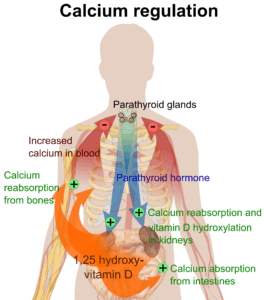 Parathyroid
Parathyroid
There are four parathyroid glands; they’re located two on each side of the thyroid. Although the parathyroids are attached to the thyroid gland anatomically, and the glands are connected to the thyroid, they have no related function. The parathyroid release parathormone, or PTH, or parathyroid hormone. PTH has the opposite job of calcitonin (the lessor known thyroid hormone); PTH increases levels of calcium and phosphorus in the blood. It accomplishes this by increasing the cells of the bone (osteoclasts), which reabsorb calcium. It also increases urinary re-absorption of calcium by the kidneys. In addition, it causes the kidneys to form calcitriol, a hormone made from vitamin D that increases absorption of calcium from the GI tract.
Parathyroid Adenoma
Hyperparathyroidism refers to increased PTH production, usually because of a benign tumor of one or more of the parathyroid glands (parathyroid adenoma). When PTH is excessively produced, calcium is reabsorbed back into the blood from the kidneys, bones, and stomach. This leads to a condition sometimes called “stones, bones, groans, and moans,” which refers to the classic set of hyperparathyroidism symptoms: kidney stones, osteoporosis, groans of pain due to intestinal distress, and moans due to psychosis.
Removing a parathyroid adenoma, a fairly simple, typically successful surgery, can cause an immediate return to healthy function.
Natural remedies for hyperparathyroidism generally include anti-inflammatory, antioxidant, vitamin C, desiccated glandsg, and vitamin D supplementation (extreme caution should be taken with large dosages of vitamin D when blood calcium levels are high). A holistic approach for tumors on the parathyroid will take time, but fortunately, hyperparathyroidism has a very slow progression.
Adrenals – Suprarenal Glands
Our two adrenal glands are on top of the kidneys, hence, the terms “adrenal,” as in “added” to the renal glands
The adrenal glands are composed of two entirely separate sections, the cortex and the medulla. Like the pituitary gland, the two sections of the adrenals evolved from two entirely different types of tissue.
Adrenal Medulla
The adrenal medulla evolved from the nervous system. The adrenal medulla works with the autonomic nervous system (the unconscious processes like breathing and digestion). The inner adrenal medulla has a direct connection to the brain.
Adrenal Medulla Hormones
The adrenal glands produce adrenaline (80%) and noradrenaline (20%), more commonly known among the medical establishment as epinephrine and norepinephrine. These hormones together are known as catecholamines.
The medullary hormones are not essential for life, but life without them would be difficult. Without stress, these hormones wouldn’t be necessary, but there are varying degrees of stress. The adrenal medulla hormones compensate when we stress our bodies with a simple act like standing up from a reclining or sitting position. Without these hormones, your blood pressure would drop when you stand because gravity causes your blood to pool at the feet and legs.
Adrenaline
Epinephrine, more commonly called adrenaline, can increase heart rate, contract blood vessels, dilate air passages, and get the nervous system ready for a fight or flight response. Epinephrine acts on almost every part of the body.
Noradrenaline
Norepinephrine, also known as noradrenaline, works with epinephrine and adds its own stimulus to the brain. Like adrenaline, noradrenaline responds to the fight-or-flight stimulus. Noradrenaline increases our heart rate, triggering the release of glucose from the body’s energy stores, and increasing blood flow to our muscles. Noradrenaline also affects the parts of the brain where attention and response actions are carried out. Noradrenaline is also an anti-inflammatory agent for the brain.
Adrenal Medulla Disorders
When the medulla is in trouble, so is the nervous system. Pathology of the adrenal medulla is primarily caused by neoplasm (tumors) or otherwise poor nervous system functionality, but there are many other issues that can cause too much or not enough of the two hormones. The nervous system will compensate for a lack of adrenal hormones for some time, but healing the thyroid, healing the entire adrenal gland, and if need be, healing the endocrine system as a whole, is the only way to ensure returned health to the adrenal medulla.
Adrenal Cortex
The adrenal cortex is divided into three zones and produces three main types of steroid hormones.
In medical school, one way we learned to remember these three layers is: ‘Salt, sugar, sex… the deeper it goes, the sweeter it gets.’ Not important, but catchy.” – Precision Nutrition
Zona Glomerulosa & Mineralocorticoids
Mineralocorticoids (such as aldosterone, which makes up about 96% of the hormones in this mineralocorticoid group) produced in the zona glomerulosa help regulate blood pressure and electrolyte balance. Aldosterone controls water and electrolyte (sodium and potassium) concentration.
The mineralocorticoids act upon the kidneys, which under the direction of these hormones excrete sodium or potassium as required to maintain optimal balance. Adrenal adenomas (benign, actively secreting growths in the cortex) cause hyper-production of aldosterone, which may account for as much as 25% of patients with high blood pressure.
Zona Fasciculata & Glucocorticoids
Cortisol (also called hydrocortisone) makes up 95% of the glucocorticoids hormones produced, but there’s also corticosterone and cortisone.
What does cortisol do:
- Depresses the immune system.
- Anti-inflammatory by reducing immune system response.
- Retards allergic overreactions, but this may slow wound healing.
- Promotes the breakdown of protein (catabolism).
- Promotes the conversion of triglycerides to stored fatty acids.
- Promotes glucose formation (gluconeogenesis).
- Promotes resistance to stress which results in higher blood pressure.
Two well-known diseases of the adrenals are Addison’s disease and Cushing’s syndrome. Addison’s disease results from acute adrenocortical insufficiency. Cushing’s syndrome is caused by excessive adrenal cortical function.
John F. Kennedy may be history’s most famous Addison’s disease patient and required regular cortisone injections to deal with stress. Since one of the side effects of cortisol injections is a “tanning” of the skin, JFK looked his best (tanned and relaxed) during times of stress — immediately after injections.” – John Barron
Full blown Addison’s disease is rare, but adrenal fatigue is extremely common. Cushing’s syndrome is rare, too.
Zona Reticularis & Androgens
Testosterone is the most well-known androgen. Androgens are masculinizing hormones. In adult males, not many of these hormones are produced in the adrenal gland. Men produce most of their androgens in the testes while women produce their androgens in the adrenal glands.
Adrenal Fatigue
Many health care professionals estimate that 80% or more American adults suffer from some level of adrenal fatigue. With our addiction to caffeine, nicotine, and other stimulants and our tendency to bathe in Wi-Fi and cellular radiation, it seems likely.
Symptoms of Adrenal Fatigue Include
- body aches
- trouble concentrating
- racing thoughts
- moodiness and irritability
- always feeling tired
- feeling overwhelmed
- hormone imbalance
- cravings for sweet and salty foods
Nutrients that Boost Adrenal Response
How to Heal Adrenal Glands
Supplement with vitamin D3, a B complex that’s got extra B5, a fatty acid supplement with DHA and EPA, a good multivitamin powder, and a liquid mineral formula.
Get the diet right. No stimulants like coffee, caffeinated teas, energy drinks, tobacco, etc. In fact, no drugs period. Eat more fresh raw vegetables than anything else, and eliminate refined and processed foods like white rice, HFCS, and even that bag of organic, super healthy, ancient grain, non-GMO quinoa chips. If you didn’t make it, don’t eat it.
Make sure the body is working right in other areas that affect adrenals. The endocrine system as a whole, and especially the thyroid, kidneys, and hypothalamus, must be in decent working order to heal the adrenals all the way. If necessary, kill Candida and balance the gut. (it’s likely very necessary if you have adrenal fatigue with our toxic, sugar-laden, antibacterial crazed society, which is often the underlining cause of endocrine disorders).
Start grounding regularly, at least 15 minutes a day (more is better). Do some sun gazing while you’re at it (but do not look directly at the sun). Get out in nature a little every day or as often as possible (again, more is better). Avoid or compensate for Wi-Fi, cellular, and other EMFs (salt lamps help, grounding probably does, too). Learn to breathe properly by breathing in deeply in a manner that causes your stomach to expand when you breathe in.
If your symptoms don’t improve quickly, glandular supplementation can help (if you’re not vegan) and a few adaptation herbs can help as well.
The Pancreas
The pancreas produces enzymes for digestion (exocrine) and makes hormones (endocrine). The pancreas makes more exocrine than endocrine. Ninety-eight to ninety-nine percent of the pancreas is used for the digestive juices, but the pancreas also contains scattered groups of neuroendocrine cells called pancreatic islets, or islets of Langerhans. The pancreas is about 12 inches long and tapers to your left. It’s located in the upper abdominal cavity, towards the back, in the C curve of the duodenum.
Physiology of the endocrine pancreas — four cell types
The islet of Langerhans is comprised of four distinct types of cells, alpha, beta, delta, and gamma.
Alpha cells
Alpha cells constitute 20% of the islet’s cells. They secrete a hormone known as glucagon which is a polypeptide made up of 29 amino acids, which raise blood sugar as needed to maintain normal levels.
The pancreas releases glucagon when glucose levels in the blood fall too low. Glucagon causes the liver to convert stored glycogen into glucose, which is released into the bloodstream. High blood glucose levels stimulate the release of insulin.
Beta cells
Beta cells constitute around 80% of islet cells. They produce and secrete insulin, a small protein hormone that regulates how the cells in the body utilize glucose. Seventy-five percent of this glucose is used for brain function, while the rest is used for muscle function, red blood cell production, and fuel for every single cell in the body.
Beta cells also produce insulin-like growth factors (specifically, IGF-2), which are available in many body tissues at concentrations that far exceed insulin. IGF -2 shares the molecular structure and shape of insulin and is involved in growth.
Delta cells
Delta cells, which constitute less than 1% of pancreatic islets, secrete somatostatin, the same growth-hormone-inhibiting hormone secreted by the hypothalamus. This hormone inhibits insulin release and slows the absorption of nutrients from the GI tract.
Gamma cells (F cells)
Gamma cells also constitute less than 1% of pancreatic islets. They secrete a pancreatic polypeptide to inhibit somatostatin release.
Delta cells and Gamma cells regulate each other.
Diabetes Mellitus
As of 2015, diabetes is the seventh leading cause of death in the U.S. and it’s moving up, especially throughout the rest of the world. If stats took into consideration cardiovascular disease (when caused by diabetes) and kidney failure, those numbers could be considerably higher.
There are two main types of diabetes. Type I is insulin-dependent diabetes mellitus and Type II is non-insulin-dependent diabetes, which used to go by the name “maturity-onset” or “adult-onset diabetes,” but with our modern diets, it’s not just adults over 40 anymore, or even just adults who are diagnosed with Type II. The third type of diabetes, gestational diabetes, is a temporary condition that occurs during pregnancy. Type I and Type II diabetics end up at essentially the same place, though they arrive there in a very different manner.
With Type I, the body can’t produce enough insulin to drive the sugar into cells where it needs to be used for energy production. With type II the body produces enough insulin (at least in the beginning), but cells become insulin resistant, so sugar stays in the blood.
Natural protocol for dealing with diabetes
Alternative methods for dealing with both types of diabetes are similar, but there are a few additional needs for anyone with type I due to the fact that it’s an autoimmune disease as well as an endocrine disease.
Metformin is the first-line medication for the treatment of type 2 diabetes, generally used to keep blood sugar levels low. Like almost every other pharmaceutical, it’s toxic and has a list of side effects. The good news is the following herbs are shown to work just as well, or even better when you consider the lack of side effects:
- Gymnema sylvestre, also called “miracle fruit” (note that this is a common name for two unrelated plants), is an herb native to the tropical forests of southern and central India and Sri Lanka. Studies have shown that this plant can help maintain healthy blood sugar levels.
- The prickly pear cactus, known as nopal in Mexico, offers many medicinal effects including the ability to lower blood sugar. It has been well documented by many studies, and it’s used for treating type-2 Diabetes in Mexico.
Other herbal supplementation known to stabilize blood sugar levels:
The following nutrition can help reverse insulin resistance:
You can also help to rebuild the beta cells in the pancreas to optimize insulin production with:
Remember, adrenaline suppresses the release of insulin. Some say to reduce stress, which is always a good idea, but more importantly, handle stress well without losing your temper.
Specific Additions for Type I diabetes (insulin dependent)
Since Type I diabetes is an autoimmune disease, addressing autoimmune activity makes sense. But, the following nutrition wouldn’t be a bad idea for type II diabetes or for almost any autoimmune disease.
Immunomodulators
The following can balance immune system activity and reduce inflammation.
Infection
Viruses may be a cause of Type I diabetes (and Lyme, and many other autoimmune diseases). It’s not at all the whole story (and our bodies can turn off and on viruses depending on our health and genetics, and incidentally, our genetics change with our health as well). Candida, bacterial infections, other fungi, parasites, and/or viruses are likely to be running havoc on anyone with diabetes.
- Garlic (antimicrobial, many other benefits, pills are ok but best when eaten raw, crushed, see more on garlic)
- Olive leaf (rare herb that leaves beneficial bacteria intact, kills bad guys)
- SF722 (antimicrobial, specifically very effective antifungal
- Berberine (powerful antimicrobial)
Other Nutrition
Protect organs from damage and repair damage caused by the high insulin caused by diabetes:
- Blood cleaning formula, because the healthier the blood is, the healthier the body is.
- Proteolytic enzymes (aka systemic enzymes) to break down protein. (Better assimilation of proteins, and helps break down virus proteins, too.)
- Probiotics, because anyone who’s eaten enough sugar to get a diabetes diagnosis needs to take a good probiotic for a long time!
- Coenzyme Q10 may help with blood glucose control, and it’s got a massive amount of other benefits, many of which help with diabetic issues.
Gonads – Reproductive Organs
Although the gonads are part of the endocrine system, their primary purpose is to produce gametes (semen and eggs).
The woman’s ovaries are located on both sides of the uterus below the opening of the fallopian tubes. They are oval or almond-shaped. The ovaries produce estrogen and progesterone. These two hormones affect many of the female characteristics and reproductive functions.
The male’s testes are egg-shaped organs that hang in a pouch of skin called the scrotum outside the male body. The testes produce testosterone, which affects many of the male characteristics and sperm production.
Women synthesize most of their estrogen in their ovaries and other reproductive tissues. Since men lack this female anatomy, they need to produce estrogen through a process involving an enzyme called aromatase that transforms testosterone into estradiol.
In women, testosterone is produced in various locations. One-quarter of the hormone is produced in the ovaries, a quarter is produced in the adrenal glands, and one-half is produced in the peripheral tissues from the various precursors produced in the ovaries and adrenal glands.
Testes
The testes secrete testosterone, which is necessary for proper physical development in boys. Testosterone maintains libido, muscle strength, and bone density. Disorders result from a lack of testosterone production. Here are the common causes:
- Defects in the pituitary, hypothalamus, thyroid, and adrenals can affect testosterone production.
- Medications can affect testosterone production.
- Testes-based conditions, such as severe injury, radiation, or chemotherapy can all deplete testosterone levels.
Besides the case of an injury, if the testicles aren’t working there’s almost always a problem within the endocrine system.
Raise Your Testosterone Naturally
- HITT (High-intensity interval training)
- Weightlifting
- Moderate intermittent fasting
- Don’t smoke
- Detoxify the endocrine system (if need be)
- Eliminate refined foods, especially sugar
- Eat healthy fats
- Get enough vitamin D and zinc
- Handle stress well
- Sleep well
- Avoid soy and alcohol
- Eat nuts
- Limit or eliminate coffee
Ovaries
The ovaries are a pair of ova-producing organs (that is, they produce egg cells) that maintain the health of the female reproductive system. The ovaries, like their male counterpart, the testes, are known as gonads. This simply means they are the primary reproductive organs.
In addition to their role in producing ova, the ovaries also have the distinction of being an endocrine gland because they secrete hormones—primarily estrogen and progesterone—that are vital to normal reproductive development and fertility.
Estrogen (estradiol, specifically) plays a vital role in breast development, fat distribution, and the development of the reproductive organs.
Diseases and Disorders of the Ovaries
Diseases associated with the ovaries include ovarian cysts, ovarian cancer, menstrual cycle disorders, polycystic ovarian syndrome, and osteoporosis.
Menopause is a rapid loss of estrogen production at a certain age, typically around 50; better health can delay it.
The ovaries play an immensely important role in the female reproductive system, and in the endocrine system as a whole. The hormones they secrete ensure the proper development of the female body and promote healthy fertility.
Natural Remedies for Polycystic Ovarian Syndrome
Avoid AGEs: Women with ovarian cysts have higher levels of advanced glycation end products (AGEs) in their blood. These are cancer-causing compounds formed when glucose binds with proteins, typically caused by high-heat cooking methods with meat and sugars.
Get Enough Nutrition
Obviously, eat well, but also make sure you’re getting enough vitamin D, calcium, vitamin E, essential fatty acids, chromium, and magnesium.
Avoid Wheat
Just try it for two weeks. Today’s wheat is wreaking havoc on our bodies, and many women dealing with ovarian cysts have issues with gluten. Eliminate refined sugars as well, detoxify the gut, and take care of the endocrine system.
Supplemental
- Increasing progesterone in the body, which decreases estrogen, can help as well. You can do this with a progesterone cream applied to the skin, but the following herbal remedies are a better choice than ingesting or absorbing a hormone.
- Maca root (Lepidium meyenii) helps the body produce progesterone, balances the hormones, and helps balance the endocrine system as a whole.
- Black Cohosh root (Actaea racemosa): helps regulate the menstrual cycle, and is really good at relieving ovarian pain.
- Dong Quai root (Angelica sinensis) is a Chinese herb known to aid hormonal balance and, specifically, congestive fertility issues. Dong Quai also supports healthy circulation to the reproductive organs and promotes healthy menstruation cycles. Dong quai should not be consumed by women with fibroids or blood-clotting problems.
- Milk thistle seed (Silybum marianum) supports hormonal balance through liver support.
- Tribulus (Tribulus terrestris) has been shown to normalize ovulation when used prior to ovulation.
- Vitex, AKA chaste tree berry, chasteberry (Vitex agnus-castus) aids in regulating hormonal balance, promotes ovulation, and improves menstrual cycle regularity.
- Wild yam root (Dioscorea villosa) promotes a healthy menstrual cycle and hormonal balance and reduces ovarian pain.
Naturally Alleviate Menopause Symptoms
Menopause can be both a blessing and a curse. The right diet can usually alleviate symptoms, but the bad news for some women is that when health is restored fully, menopause may be delayed. It may be a choice between hot flashes or periods, but know that PMS symptoms dissipate as well with better health, and so does heavy menstrual bleeding.
- Black Cohosh (Actaea racemosa, Cimicifuga racemosa) has received considerable scientific attention for its effects on hot flashes and other menopausal symptoms.
- Red Clover (Trifolium pratense) has been reported to help women with hot flashes. Studies report few side effects and no serious health problems with use.
- Dong Quai (Angelica sinensis) has been used in Traditional Chinese Medicine to treat gynecologic conditions for centeries. Dong quai has blood thinning properties, and should not be consumed by anyone with fibroids or blood-clotting problems.
- Evening primrose oil or black currant oil provide gamma-linolenic acid (GLA), an essential fatty acid that can influence prostaglandin synthesis and help moderate menopausal symptoms.
- Ginseng (Panax ginseng or Panax quinquefolius has been shown in research to alleviate some menopausal symptoms, but it has not been found to be helpful for hot flashes.
- Omega 3s with DHA and EPA, B vitamins, vitamin D, Vitamin E, Magnesium, and exercise have all been shown to alleviate hot flashes as well.
Natural Remedies for PMS
Most women deal with headaches, mood swings, bloating, and other hormonal problems that threaten their relationships, work life, and well-being every month due to PMS.
It’s not a curse. It’s not something women have to live with. Difficult monthly cycles are a sign of poor health. The healthiest women barely notice their cycle, do not feel as though emotions run away with them every month, are exceptionally regular, they do not cramp, and they spot, as opposed to a heavy bleed. Along with a healthy diet, make sure you have the basics covered, including B vitamins (get a complex with extra B6), healthy fats (with DHA and EPA) vitamin D, Vitamin E, Magnesium and exercise, along with lots of fresh, raw, organic produce every day (more vegetables than fruit). And as always, avoid stimulants, soy and refined processed foods.
PMS is also a symptom of an unhealthy gut with too much Candida. Cutting out sugar and other foods that feed yeast, and high-quality probiotics taken regularly also work wonders for many women with difficult PMS.
Also for cramps, cranberry lemonade with stevia, and Mountain Rose Herb’s pregnancy tea works amazingly well. This is also great for detoxifying the liver and kidneys, and alleviating morning sickness.
- Chasteberry fruit extract (Vitex Agnus-astus) can help balance the hormones released by the pituitary gland that control your overall hormone function. Studies of over 5,000 women have found it effective. Take 100 mg twice a day of a 10:1 extract.
- Wild yam (Dioscorea villosa) and cramp bark (Viburum opulus) can help regulate cycles and relieve cramps.
- Dandelion root can help with liver detoxification and also works as a diuretic.
- Flax seeds contain lignans that balance hormone metabolism and block some negative effects of too much estrogen. The fiber in flax seeds helps too.
- Black Cohosh (Actaea racemosa, Cimicifuga racemosa) has received considerable scientific attention for its effects on hot flashes and other menopausal symptoms.
- Red Clover (Trifolium pratense) has isoflavones that improve estrogen detoxification.
- Dong Quai (Angelica sinensis) is an antispasmodic herb that eases cramps and other symptoms of PMS. It dilates blood vessels to increase flow and helps replenish blood after the period has ended.
Some swear by progesterone creams to calm raging PMS. As previously mentioned, increasing progesterone reduces the problems associated with estrogen. Extreme care should be taken with this or similar hormone therapies.
Endocrine Abilities of the Liver, Heart, Stomach, and Kidneys
The kidneys release erythropoietin and calcitriol. Erythropoietin stimulates the red bone marrow to produce red blood cells (erythrocytes), and calcitriol is a hormone involved in regulating the amount of calcium and phosphate ions found in our blood.
The heart produces a peptide hormone called natriuretic peptide (ANP) that’s involved with regulating blood pressure and blood volume in our blood vessels.
The stomach produces many hormones, including gastrin which is involved in stimulating parietal cells in the stomach to secrete gastric acid (HCl), which increases the acidity (decreases the pH) and gets the digestive system ready to absorb and assimilate nutrition.
The liver releases thrombopoietin, which is involved in the production of platelets required for blood clotting.
When the endocrine system does not perform well, it can set off a chain reaction that affects all of the body’s hormone production, which can affect every gland, every organ, and obviously the entire body. While specific detoxification and healing protocols of these hormone-secreting organs are a bit out of the scope of this article. A holistic protocol that addresses the endocrine system as a whole will address hormonal activities of the heart, liver, stomach, and kidneys, and improve their entire functionality as well.
Heal the Endocrine System and Balance Hormones Step By Step
As OLM always says, it starts with diet. Supplemental therapies are much more effective with a healthy diet, and for most people, the right diet is all they need. But there are plenty of people who do not have access to healthy foods, and there are many who have such a depleted endocrine system that the body is just plain going to need a lot of help.
Eliminate and Flush Out Endocrine Disrupters and Detox the Body
Endocrine disruptors (EDs) are chemicals that mimic our own hormones. They bind hormone receptors and disrupt the body’s normal hormonal actions. Endocrine disruptors may cause a more powerful response than the natural hormone would have or a diminished response. In some cases, they cause a completely different response than its natural counterpart would have created. EDs are typically measured in parts per trillion, which is indicative of the fact that very small amounts can have a disrupting effect on us. EDs are very stable. They don’t break down quickly. This is, in large part, why they are in so many products. They also get stored in our fat cells. They tend to stick around for a long time.
How to Avoid Exposure to Endocrine Disruptors
- Keep your home clean, and vacuum often.
- Always avoid artificial fragrances
- Avoid plastic (I know, easier said than done)
- Avoid touching, breathing the air, or consuming foods or liquids that have come in contact with warm or hot plastics (make sure that a hot car is well ventilated)
- Avoid canned foods
- Avoid any and all BPAs and most products that replaced BPAs with other petroleum based products
- Filter tap water before drinking
- Get a whole house water filter (we breathe chemicals from tap water when we shower)
- Avoid chemical cleaning products
- Avoid conventional personal care products like makeup, shampoos, soaps, moisturizers, etc.
- Avoid food sprayed with chemicals
- Avoid BPA paper receipts (some receipts contain 250 to 1,000 times the amount of BPA typically found in a can of food)
As usual, eating right makes all the difference. Science is finding that people who eat well, and include copious amounts of various vegetables in their diet, have less concentration of BPAs and other EDs in their body than people exposed to similar levels who do not eat well.
Get Your Gut Right
A healthy gut expels toxins better than an unhealthy gut. A healthy gut has beneficial bacteria, which science is finding makes a big difference in the amount of EDs we retain. Specifically, there’s been some big research on probiotics:
In one study, lab rats were exposed to BPA and some of them were later given probiotics. The results found that the amount of BPA excreted through urine and bowel movement was 2.4 times greater in the rats given probiotics, and the percentage of BPA bound to the excrement was significantly greater. This equated to lower BPA concentration levels in the blood for the rats administered probiotics.
Eat Right – Always Be Detoxifying
Eat a salad every day with lots of raw vegetables and herbs, many of which help moderate estrogen and other hormone levels, and these salads will help flush out chemicals. Drink lots of water, and try cranberry lemonade with stevia to aid the body with detoxification.
Avoid and Remove Toxic Heavy Metals
Arsenic, cadmium, lead, mercury, and many more of these kinds of waste from industry have detrimental effects on our endocrine system.
Supplements and Foods that Remove Heavy Metals
Sleep Well
We work all day. Our body works all night to regenerate. When we don’t get enough sleep, we need adrenalin to make it through the day. This wears out the adrenal glands and eventually disrupts the entire system. Adrenaline, as common as it is, can be toxic to us after some time. Get plenty of quality, deep, regenerative sleep and don’t compensate with stimulants.
Exercise and Be Active
If sleeping well is difficult, exercise is most likely the answer. But that’s not all exercise has to offer. Breathing heavily and sweating profusely during an intense exercise program can expel a tremendous amount of toxins. Exercise also resets our hormones, balances our mood, and makes our brain work much better. While most turn to alcohol, television, and drugs during times of stress, this is when we need exercise the most. Here’s a tip: next time life gets too stressful, take a squat break. Squats release tons of hormones and will help alleviate stress and cravings for vices.
Top 10 Herbs, Vitamins, and Minerals for Better Endocrine Health
Before we get into this, know that every vitamin and mineral is important. We tend to be low in some more than others due to the way we live, but taking vitamin D won’t make up for not getting enough calcium. For that matter, taking a calcium supplement won’t make up for not getting enough calcium either, because we need to get most of our vitamins and minerals from our food. Supplements can supplement our food, but they don’t make up for a toxic diet.
- B vitamins: Always use a complex unless otherwise recommended by a professional.
- Fatty acids with DHA and EPA: There’s a million reasons, but the bottom line is that we need the right fats to create healthy cells. Since cells are what we are made of, healthy cells = healthy body.
- Vitamin D: It’s actually a hormone.
- Magnesium: Like vitamin D, Magnesium is one of those nutrients that we tend to be pretty low in, and the results from fixing the deficiency are usually pretty dramatic.
- Maca root: Most often taken to improve libido, energy levels, mood, and fertility, maca does not affect the hormones directly, but it has hormone-balancing effects that help alleviate a range of stressors including fatigue, anxiety, stress, depression, and sleep issues.
- Chasteberry: This herb has been used for thousands of years by women to relieve menstrual problems and it’s also used by natural health practitioners to reduce a male’s testosterone levels when need be (not recommended for most men of course).
- Black cohosh: First used by native Americans, and now very popular in Europe, this herb has commonly been used to treat symptoms of menopause, PMS, painful menstruation, acne, weakened bones osteoporosis, and for starting labor in pregnant women. Black cohosh also has many positive benefits for men as well.
- Saw palmetto: While the previous two are typically used by women, saw palmetto is known as a male supplement, primarily for better prostate health and to balance men’s hormones. But it’s not just for men, as it’s also useful for women with hair loss, acne, menopausal symptoms, and more. It also keeps women from producing too much testosterone but does not seem to impede normal production.
- Glandulars: Glandulars are desiccated glands, typically derived from pigs, cows, or sheep. They are obviously not for vegans, but if they are an option, glandulars provide the nutrition that the glands need, obviously, since they are made up of that nutrition.
Stress
You see every professional talking about eliminating stress when you look at articles about balancing hormones. For those who like to cause stress, this is great advice. On the other hand, the idea of eliminating stress for most people is fool hearty. Accidents happen. Children go missing. People get fired. Wars happen. People die. Stress will always be around, ready and waiting to consume us. The trick is in how you handle it.
People who are dealing with a lot of stress often attempt to balance their hormones in part by avoiding stress, but the stressful situation that may have helped set off the hormonal imbalance still needs to be dealt with, and chances are, dealing with stressful situations is going to be stressful.
Handle stress better.
Breathe properly (deeply, like a singer or a martial artist). A well-trained massage therapist can help detoxify the body, and we all know how relaxing a massage can be. Grounding helps open our energy pathways, which has a tremendous effect on our glands. Spend lots of time in nature. Try yoga. Meditate. And don’t quickly make big decisions when you are stressed.
Conclusion
It takes time for the endocrine system to heal; it’s rarely a quick process. Since our endocrine system is responsible for our hormones, when our hormones aren’t working, we really aren’t ourselves. Or at least, we’re not our best. Hormones influence us so powerfully that a balanced endocrine system can be the difference between happiness and misery. When our hormones aren’t working right, we can’t think straight. We make poor decisions. We lash out. We live in fear. We excite too easily. We sleep too much or not nearly enough. Hormone balance is critical! But that’s the catch.We tend to self-sabotage when our hormones aren’t working properly. Someone who’s head isn’t working right tends to have a very hard time getting well. It often makes a long road to health even longer. And for those who are overweight, hormonal problems will continue to be an issue until well after that excess weight is lost because of how we store toxins in our fat.
Be patient. The good news is that it virtually always takes a heck of a lot less time to get well than it took to get chronically ill. And if you read this far without skipping ahead, then patience is something you obviously have!
P.S. The following is a list of supplements that could all be taken together (save the male and female formulas, obviously you’ll pick one). Not everyone will need more than a few of these to see significant results. Most importantly, nobody will notice significant results without a healthy diet. It’s imperative that the gut is taken into consideration for any holistic approach to healing. Gut health comes first, and ignoring the gut will result in a lot of problems. Be sure to check out Detox Cheap and Easy Without Fasting – Recipes Included, and Candida, Gut Flora, Allergies, and Disease, and see the Further Reading section below.
Recommended Products:
Related Reading:
Sources:
 Squash and Quinoa Chili – 23 grams of protein
Squash and Quinoa Chili – 23 grams of protein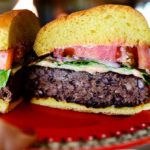 Simple Black Bean Burgers – 22 grams of protein
Simple Black Bean Burgers – 22 grams of protein Tacos – 18g and up
Tacos – 18g and up Sweet Potato Pizza – 22.2 grams of protein
Sweet Potato Pizza – 22.2 grams of protein Stuffed Bell Peppers – 18 grams of protein
Stuffed Bell Peppers – 18 grams of protein Vegetarian Enchiladas – 34.9 grams of protein
Vegetarian Enchiladas – 34.9 grams of protein